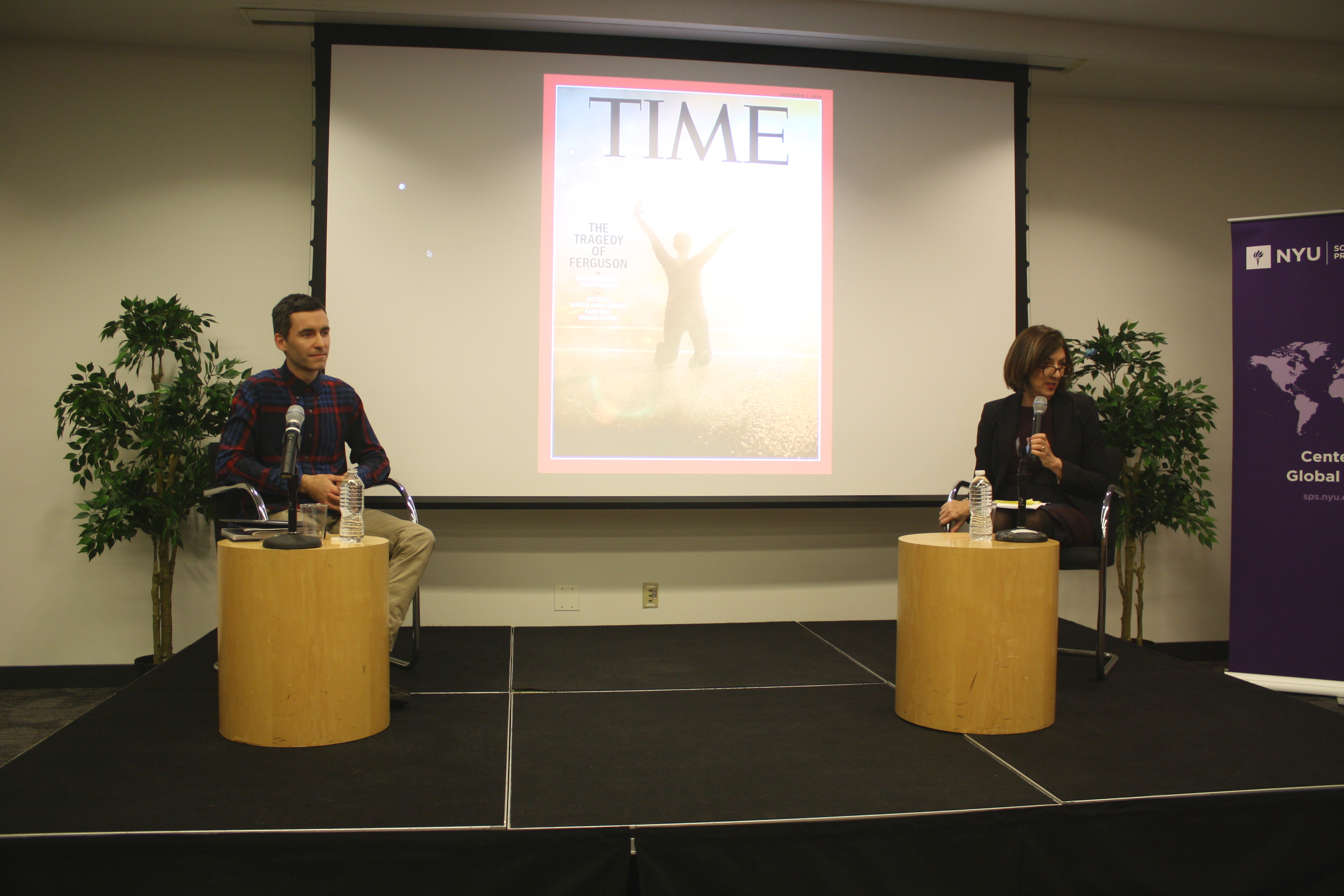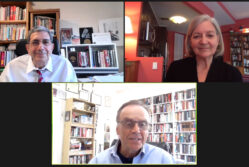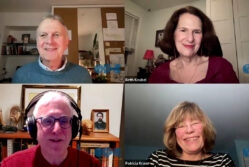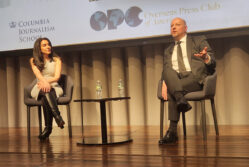Event Coverage Highlight

Paul Moakley Tackles Unique Challenges to Cover Ebola for Time Magazine

Paul Moakley and Alexis Gelber talk to audience members during a forum on Covering Ebola at the NYU Center for Global Affairs on Feb. 3.
Journalists face a host of increasing dangers when reporting in hostile zones or unfamiliar territory. But the deadly Ebola epidemic in West Africa, one of the biggest stories of 2014, posed unusual challenges for newsrooms and journalists trying to cover the story safely.
On Feb. 3, the OPC and the New York University Center for Global Affairs held a forum about how to tackle such stories, which demand unique considerations like gear, quarantines, health insurance and contingency planning.
Paul Moakley, a member of the OPC Board of Governors and Time magazine’s deputy director of photography, began following the story over the summer and talking to photographers on the ground. Editors agonized over how to approach the story.
“With this story of a contagious disease, we didn’t know how to put someone in there right away and we were very cautious about it,” he told attendees.
During the outbreak, insurance companies would not cover journalists on assignment in Liberia. World Health Organization guidelines, not to mention sticky ethical dilemmas, made it hard to hire a freelance photographer.
“If you hire somebody you also have to do a 21-day quarantine, and besides paying for an assignment these days when resources are pretty limited, how can we cover a 21 day quarantine? Could we guarantee that the person would do the quarantine and be safe?” Moakley said.
Those who survive Ebola suffer lasting side effects. Recovering doctors he spoke to were coping with memory loss and vision problems, he said, not to mention emotional trauma from the ordeal.
“We didn’t actually know how we could support someone who gets sick and couldn’t work again. It’s a huge responsibility to take on as an organization and just as a human being.”
Time sent a staff reporter, Aryn Baker, who had full health insurance coverage, and trained her to shoot video for the magazine.
Time editors began to mull the idea of naming Ebola Fighters as Person of the Year weeks before the final decision was made on the famously secretive annual issue.
They hired Jackie Nickerson, a U.K. citizen with an eye for intimate portraits who was also fully covered by nationalized health care, to take photos of the Ebola fighters. She ended up shooting four of the five covers for the issue, and along with photographer Bryan Schutmaat profiled 23 Ebola fighters featured in the magazine.
Moakley traveled with them to Liberia in November as photography director for the project.
With only a few days to prepare, he secured a visa at the last minute and went on a medical protection shopping spree, hastily packing boots, gloves, snack bars and a digital thermometer before hopping on a charter flight to Monrovia. The trip was planned for less than 5 days so if anyone on the team got sick, they would be back in the U.S. before showing any symptoms.
During the trip, the team monitored their own temperatures and sent photos of thermometers home to editors.
While on the ground, Moakley talked with medical staff, burial teams and volunteers working in nightmarish conditions. He said workers were constantly exposed to bodies, many of them abandoned, and Ebola patients in excruciating pain.
“Ebola basically prevents you from acting like a normal human being and reacting the way that you want to,” he said. “You can’t be human. You can’t touch people. You are constantly in a state of fear.”
You can watch a video of the entire Covering Ebola program on our YouTube channel or in the window below.



